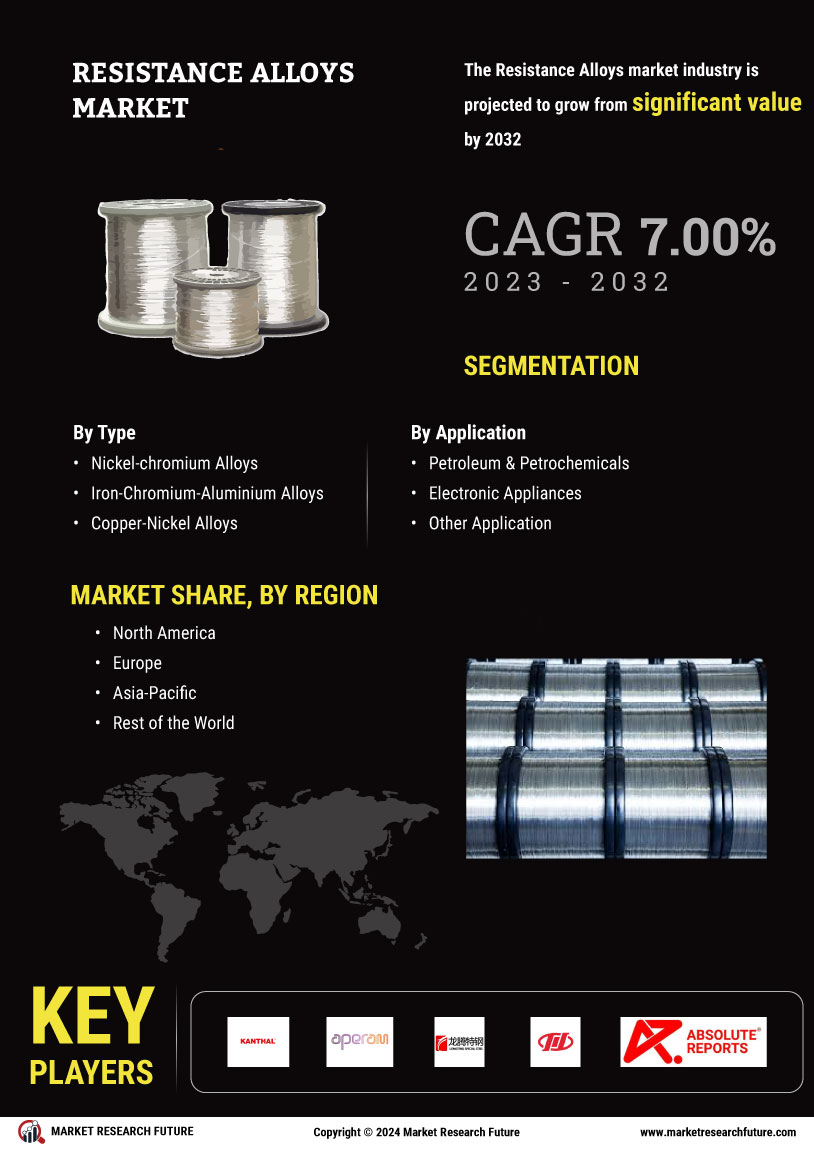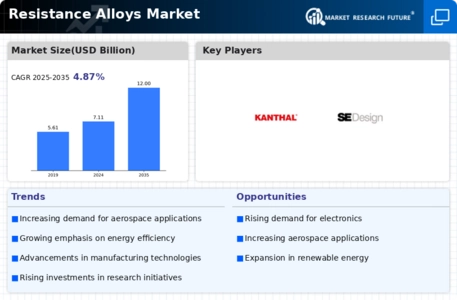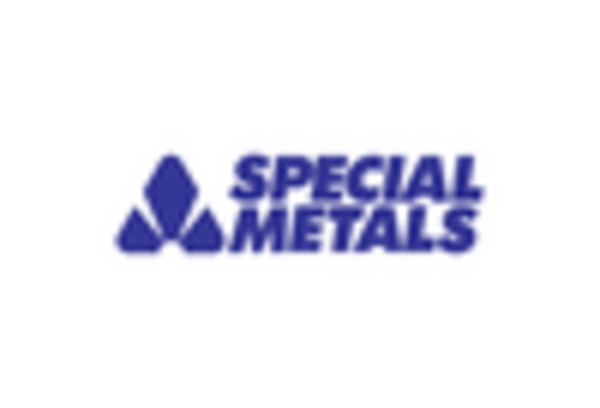Rising Demand in Energy Sector
The Resistance Alloys Market experiences a notable surge in demand driven by the energy sector, particularly in oil and gas applications. Resistance alloys are essential for high-temperature and corrosive environments, making them indispensable in drilling and refining processes. As energy companies seek to enhance efficiency and reduce operational costs, the adoption of advanced resistance alloys is likely to increase. The market for resistance alloys in the energy sector is projected to grow at a compound annual growth rate of approximately 5% over the next few years. This growth is attributed to the ongoing exploration and production activities in challenging environments, which necessitate the use of durable materials. Consequently, the energy sector's expansion is a pivotal driver for the Resistance Alloys Market.
Growth in Automotive Applications
The automotive industry significantly influences the Resistance Alloys Market, as manufacturers increasingly utilize these materials for components that require high strength and resistance to heat and corrosion. With the rise of electric vehicles and advancements in internal combustion engines, the demand for specialized alloys is expected to escalate. Resistance alloys are utilized in exhaust systems, turbochargers, and other critical components, enhancing performance and longevity. The automotive sector's shift towards lightweight materials further propels the need for resistance alloys, which offer superior properties compared to traditional materials. Market analysts estimate that the automotive applications segment could account for over 30% of the total resistance alloys market by 2026, underscoring its importance in driving industry growth.
Regulatory Support for Advanced Materials
Regulatory frameworks increasingly support the use of advanced materials, including resistance alloys, across various industries. Governments and regulatory bodies are promoting the adoption of materials that enhance safety, efficiency, and environmental sustainability. This support is particularly evident in sectors such as aerospace and automotive, where stringent regulations necessitate the use of high-performance materials. The Resistance Alloys Market stands to benefit from these regulatory initiatives, as they encourage manufacturers to invest in research and development of innovative alloys. Additionally, compliance with environmental standards drives the demand for alloys that minimize emissions and improve energy efficiency. As regulations evolve, the Resistance Alloys Market is likely to experience growth, driven by the need for compliant and advanced material solutions.
Increasing Focus on Aerospace Applications
The aerospace sector is a significant driver of the Resistance Alloys Market, as the demand for lightweight and high-strength materials continues to rise. Resistance alloys are critical in aircraft components, including turbine blades and structural elements, where performance and reliability are paramount. The ongoing advancements in aerospace technology, coupled with the increasing production rates of commercial aircraft, are likely to boost the demand for resistance alloys. Market forecasts suggest that the aerospace segment could witness a growth rate of around 6% annually, driven by the need for materials that can withstand extreme conditions. This focus on aerospace applications not only enhances the market potential for resistance alloys but also encourages further research and development in alloy formulations.
Technological Innovations in Manufacturing
Technological advancements play a crucial role in shaping the Resistance Alloys Market. Innovations in manufacturing processes, such as additive manufacturing and advanced casting techniques, enable the production of more complex and high-performance alloys. These technologies allow for the creation of tailored alloys that meet specific requirements across various applications, including aerospace, automotive, and industrial sectors. As manufacturers adopt these cutting-edge techniques, the efficiency and quality of resistance alloys improve, leading to increased market competitiveness. Furthermore, the integration of automation and digitalization in production processes is likely to enhance operational efficiency, thereby reducing costs. This trend towards technological innovation is expected to propel the Resistance Alloys Market forward, fostering growth and expanding application possibilities.


















Leave a Comment